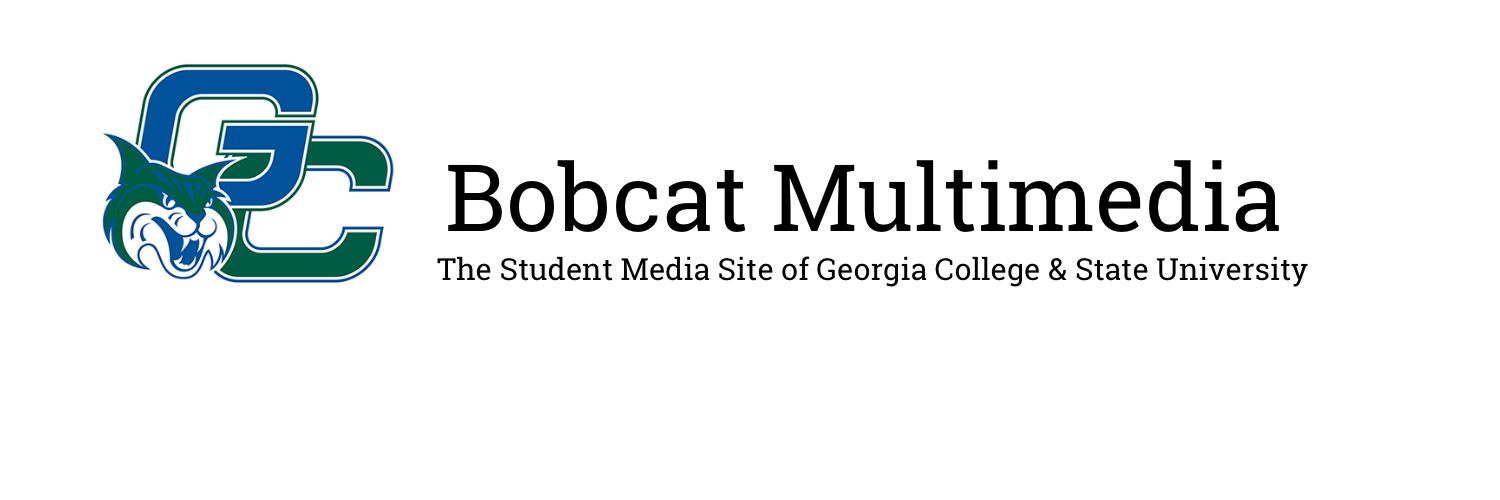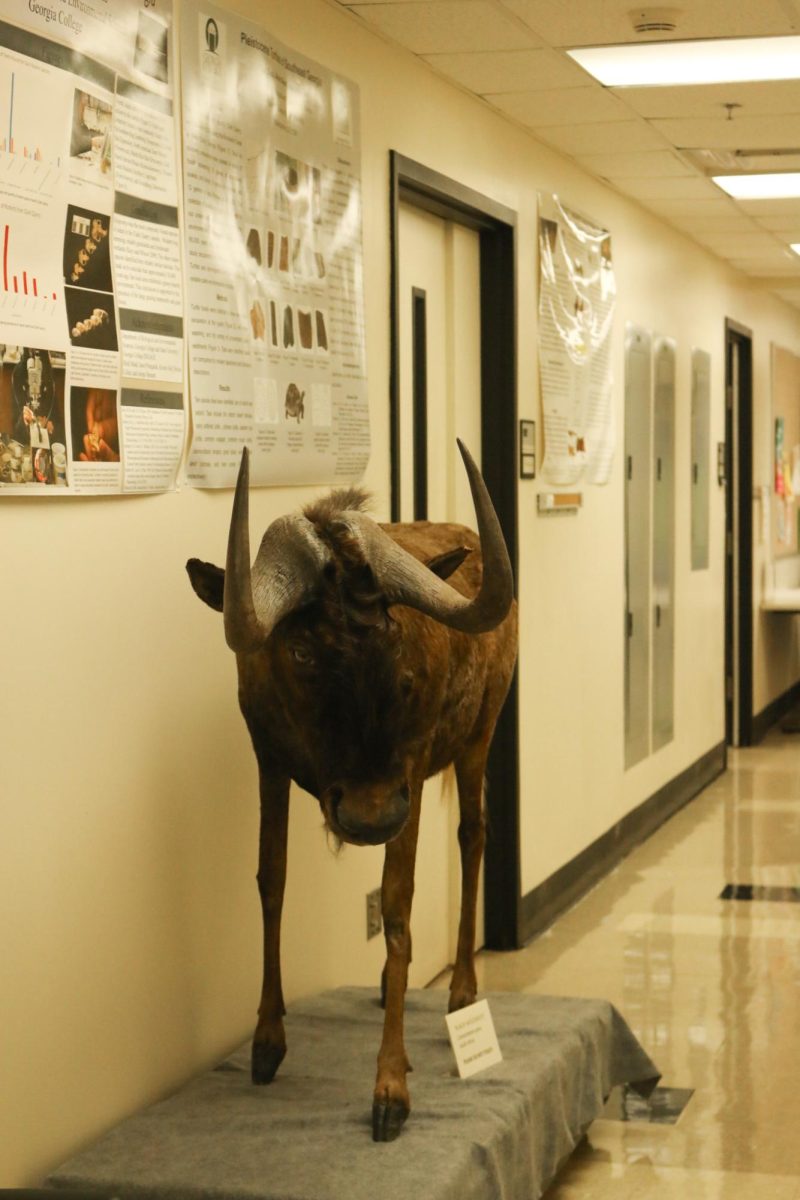The William P. Wall Museum of Natural History, located in GCSU’s Herty Hall, houses an extensive collection of natural specimens from across the globe. The museum is dedicated to the study of Earth sciences, with a focus on paleontology, and remains a hidden gem for the Milledgeville community. They are open Monday through Friday from 8:30 a.m. to 4:30 p.m., and offer free admission to the public.
The museum’s collection features everything from vertebrate and invertebrate fossils to preserved mammals, reptiles and birds.
“We’ve tried to concentrate the displays to make it easy to see the change in life over time on Earth,” said Ashley Quinn, a collections manager for the museum.
Popular exhibits include dinosaur fossils, eggs and the massive Père David’s Deer, which is often a hit with visitors due to its antler size.
Students play a significant role in the museum’s ongoing research. Over the years, they have contributed to fossil excavations and published peer-reviewed journal papers. One notable collection includes Pliocene fossils from the Santa Fe River in northern Florida that are approximately 2.5 million years old. To obtain the fossils, students were required to scuba dive in order to retrieve them.
Another collection is from the kaolin deposits near Gordon, Georgia, dating back about 36 million years. These local fossils give insight into the history of Georgia and underscore the importance of the region in paleontological research.
The museum also boasts collections from distant locations, such as Badlands National Park in South Dakota. Starting in 1983, the collection is one of the museum’s oldest. . These fossils, dating back 25 to 36 million years, include rhinoceroses, horses and camels — species that evolved in North America. Closer to home, the museum displays fossils from Brunswick and Gordon, Georgia, which include Colombian mammoth bones and other prehistoric animals.
These collections highlight GCSU’s unique position as both a research institution and a repository for significant historical findings. The museum is recognized as an official repository for the National Park Service, further solidifying its importance in the scientific community, according to the GCSU website.
Herty Hall is set to undergo renovations, which will close the exhibit space for two years. The collections, however, will remain safely housed in climate-controlled rooms.
“We have about 40,000 specimens that will be stored in the collections room, and everything in the museum will be covered to protect it from damage during construction,” Quinn said.
The museum’s exhibit spaces will remain closed to the public and students until renovations are complete. Despite the closure, plans are already in place for special events once the museum reopens. A celebration is being planned to mark the 25th anniversary in 2025.
As part of the university’s academic outreach, the museum regularly hosts biology, environmental science and museum studies classes.
“My freshman year, second semester, I was taking historical geology, and we’d go to the museum often to look at certain items. It’s honestly really cool and I think everyone should go to it at least once,” said Clay Anderson, a senior, management information systems (MIS) major.
Some students have even been lucky enough to go into the full-dome planetarium which features state-of-the-art graphic projection.
The museum’s role as a research hub and its unique collections, which are uncommon in the Southeastern United States, make it a vital resource for students, faculty and the community. The museum remains a cornerstone of academic life at GCSU. In many ways, the museum stands as a testament to the collaborative work between faculty, students and the broader scientific community.


